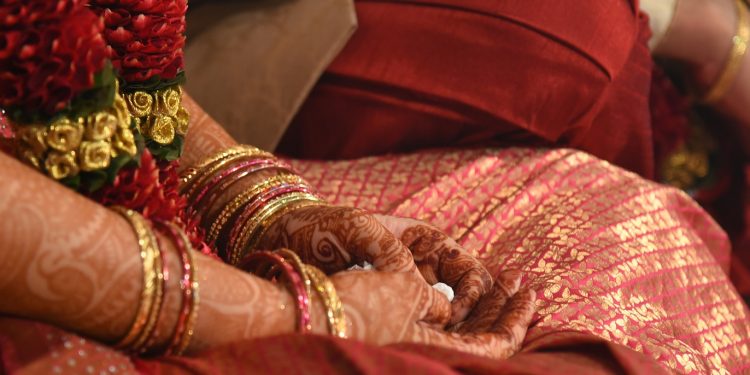Decoding Dowry: Nandini Kaur And Why It’s Not Just Another Crime

On the 20th November 2017, Nandini Kaur allegedly hung herself in the house of her in-laws because her family was unable to meet their dowry demand of 10 lakh rupees. Her father, who filed a complaint against the husband Santosh and his family, confessed that they’ve been harassing his daughter for the money.
Nandini, like most of the women who suffer from the stings of practices like these, has been physically and mentally assaulted right from the start of her marriage. Whenever she revolted, she was threatened to silence.
The Intensity Of The Crime
Nandini’s case is not just another case of dowry death. According to The National Crime Records Bureau, as many as 7,634 women died in the country due to dowry harassment in 2016. Other than that, about 21 dowry deaths are reported across the country every day. Whereas, Delhi alone has around 3,877 cases of cruelty by in-laws and husbands registered in the last year. But these are the data of only the registered cases, people who could speak out.
Regardless, the considerable rate of such instances do not lead to better punishment rates, out of all the cases, the accused is convicted only in less than 35 percent of them. This difference is discouraging to those who want to speak out about dowry takers.
Analyzing The Root Of The Problem
Even though the dowry practices have been outlawed since 1961, we have a long way to go to eradicate it. We always hear that the most interesting gossips in marriages are about the ‘lavish gifts’ that the groom has been given. The lack of hesitation of the masses in boasting about the amount of dowry they’ve been bestowed upon clearly reflects how deeply such injustice has been rooted within us. Why is the groom flowered with ‘gifts’ anyway?
Such normalization of gender discrimination can be seen through the whole idea of marriage. ‘Kanya daan’ is ‘donation of a maiden’, which shows that it’s somehow the ‘boy’s natural greatness’ that he is accepting her. No idea of ‘will and wish’ is present. It is important to notice that the ‘kanya’ is supposed to be ‘given away’ by a male (father) only. ‘Kanya’, a property of a male, ‘given away’ to another male. Women are hence, culturally considered too fragile to be independent.
After achieving a taste of equality by the judgement on triple talaq, these notions seem even more vague. It is time that such dilution of dowry in the cultural norms is highlighted in the main arena of decision making and abandoned from practicing. While the world is preaching feminism, we can’t afford to preach ancient ideas of gender inequality.
Though it is crucial to strengthen the system from within, it is equally important to make personal changes. Awareness about the dowry prohibition act is a start to prevent dowry harassments and deaths.
It Is Illegal: The Dowry Prohibition Act
The first act that is the Dowry Prohibition Act of 1961 prohibits the giving and taking of dowry. The second is the section 498-A of the Indian Penal code which prohibits cruelty by the husband or in-laws, the third is section 304-B of the Indian Penal Code, which is relates the death of a woman to the dowry demand in the first seven years of marriage.
In the last decade, there has been an increase in the registering of dowry cases, (about 300% increase in cases under the Dowry Prohibition Act). Similarly, a rise of about 250% in arrests under the same act has been recorded. So, is the amount of false cases as claimed by the police.
Thus, the data show that the Dowry Prohibition act has loopholes of its own. Many disgruntled women misuse this power in unethical ways and exploit their husband and their family. In order to avoid this, the court has recently passed a judgement in the July of this year, preventing immediate arrests of the accused. Arguably, the possibility of misuse cannot overrule the higher intensity of dowry harassment against women, after all, there are loopholes between the implementation as well.
We as a nation haven’t been able to abolish the dowry system even after it has been stamped illegal because of such loopholes. It is important to realize that ideal system does not exist and that we have to change ourselves first in order to bring changes to the system
What We Can Do?
To not fall as a victim, we first need to start by supporting the victim and unlike what is usually practiced, by boycotting the family that encourages dowry practices. An example of this was seen in August 2017, in Hyderabad, where over 200 people pledged in Toli Chowk to eradicate dowry and decided to boycott the marriages in which dowry is taken.
Other than that, we could directly make a change by deciding not to let our closed ones marry into families that wants to take dowry, creating awareness about the laws, creating spaces for better communication so the victims can speak of such harassments, empowering women, helping the victims fight and most importantly supporting the victim in every way we can.
Conclusion
The case of Nandini also teaches us that you are not a guilty only if you ‘take’ dowry, you are also guilty when you ‘give’ dowry. As often, in the dowry cases, families succumb and fulfil such demands. Thus, fuelling the dowry takers to demand more. “Their demands were never ending. Yet, we had been fulfilling all of them ever since she married him in 2012. But this time we really did not have the money, when they asked for R 10 lakh a fortnight ago,” brother of Parvinder Kaur said who was allegedly burnt by her in-laws earlier this year. Fulfilling is encouraging and hence, the accused are not always the sole accused. Dowry is not just another crime.
We can never justify males being entitled to riches or the saying that ‘a girl child is another man’s riches’. We can never justify someone owing the somebody else money just because the person belongs to a particular sex. Dowry is prohibited legally, it’s better to prohibit it culturally as well as mentally.
